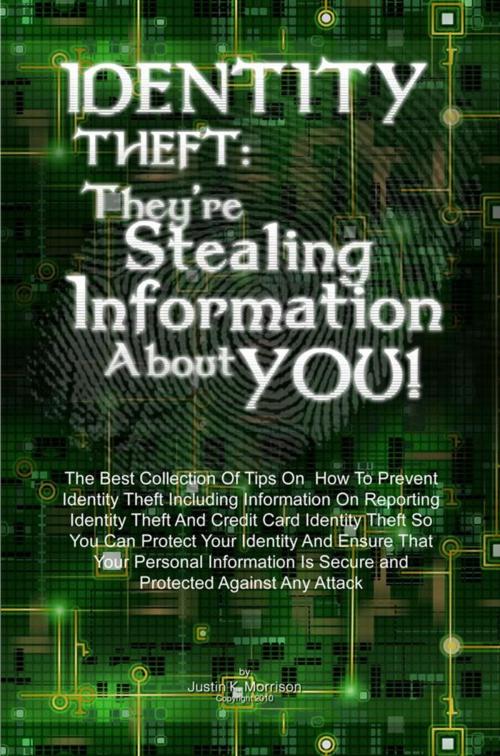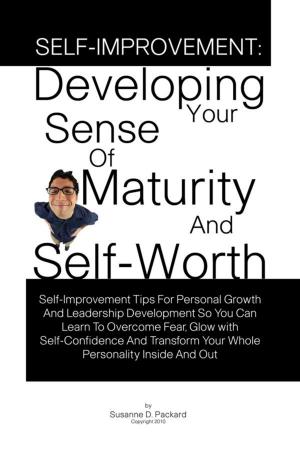Identity Theft: They’re Stealing Information About You!
The Best Collection Of Tips On How To Prevent Identity Theft Including Information On Reporting Identity Theft And Credit Card Identity Theft So You Can Protect Your Identity And Ensure That Your Personal Information Is Secure and Protected
Nonfiction, Computers, Networking & Communications, Computer Security, Operating Systems, Application Software| Author: | Justin K. Morrison | ISBN: | 1230000022534 |
| Publisher: | KMS Publishing | Publication: | October 7, 2012 |
| Imprint: | Language: | English |
| Author: | Justin K. Morrison |
| ISBN: | 1230000022534 |
| Publisher: | KMS Publishing |
| Publication: | October 7, 2012 |
| Imprint: | |
| Language: | English |
Identity theft is, in essence, something bad that happens to your good name. It is an illegal use of your name or other personal information that identifies you such as your birthday, social security number, credit card number or even school records. Information about you is stolen for the purpose of impersonating you in order to gain financial benefits or accomplish other deceptive activities.
Identity theft is a very organized crime. No matter how simple or how complex the crime, the way in which your information is stolen is carried out in a well-planned, deliberate and calculated process. In other words, these crooks know where to find you and how to get any information about you.
The very first safety measure against identity theft is to control what information you give out whether online or offline. The less people know about you, the better.
Online credit card transactions do not require photo verification. Hold off giving out your credit card details unless you feel secure about the website you’re transacting with. Be wary if a site asks for irrelevant personal information. If there is no significance at all as to why a particular information is needed then don’t give it at all, better yet, leave the site right there and then.
To avoid trash-picking, which is one of the most popular ways thieves use to steal identity, is to destroy every bit of evidence. Use shredders to dispose of papers that contain personal information instead of just throwing them in the trash. There are even shredders now that destroy CD’s/DVD’s if they contain digital personal data.
Identity theft is, in essence, something bad that happens to your good name. It is an illegal use of your name or other personal information that identifies you such as your birthday, social security number, credit card number or even school records. Information about you is stolen for the purpose of impersonating you in order to gain financial benefits or accomplish other deceptive activities.
Identity theft is a very organized crime. No matter how simple or how complex the crime, the way in which your information is stolen is carried out in a well-planned, deliberate and calculated process. In other words, these crooks know where to find you and how to get any information about you.
The very first safety measure against identity theft is to control what information you give out whether online or offline. The less people know about you, the better.
Online credit card transactions do not require photo verification. Hold off giving out your credit card details unless you feel secure about the website you’re transacting with. Be wary if a site asks for irrelevant personal information. If there is no significance at all as to why a particular information is needed then don’t give it at all, better yet, leave the site right there and then.
To avoid trash-picking, which is one of the most popular ways thieves use to steal identity, is to destroy every bit of evidence. Use shredders to dispose of papers that contain personal information instead of just throwing them in the trash. There are even shredders now that destroy CD’s/DVD’s if they contain digital personal data.















